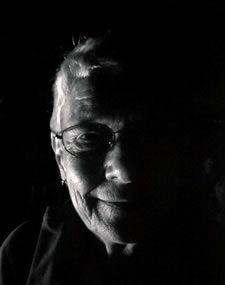 |
Dharma Gleaningsbycynthia rich
|

|
March 16, 2009—August 21, 2009
March 16, 2009
When we meet someone, or maybe even look at someone at a trolley stop, most of us are looking, usually unconsciously, for what in that face, those gestures, that tone of voice, might serve to enhance or protect our ego in some way. This is a skill we learned early on and have been refining ever since—if we think of it at all, we see it as our ability to “read” people. But when we are ego-driven, what we read on others’ faces or in their voices and gestures are not the people, but the flashing alarms of our own egos. This person whose eyes remind me of my aunt will criticize me; that person who has speech patterns like my father will say things that will interest me without judging me. This person will be needy, and I won’t be able to meet the need; this person will bore me and I won’t be able to get away, and so it goes. If we can see that our “reading” of others is a reading of the mirror of ourselves, we may give the other person enough time to show us that they are much more than a reflection of our “I.”
March 18, 2009
Am I good enough? Am I enough? are never existential questions, though they can produce much existential angst. They always presume someone on the outside, and if we can recognize this instead of looking for cosmic answers, it may help to look for the usual suspects first, those familial ghosts, who are almost always the ones shaking their heads at us or turning away in indifference, even though they may be standing behind current friends or bosses or acquaintances. It can be helpful to remember that their answers to those questions of the cringing child was—and so is—always No.
June 12, 2009
Our negativities exert not only a powerful but a seductive force. They can feel far more real, more interesting, more compelling, than simple happiness. That’s why we need to bathe in the peace and joy of our equanimity whenever it arises, to breathe it in deeply, to savor it as long as we can, to recall it with deep pleasure and appreciation. It’s almost as though we need to firmly secure that base until it can serve as a counterweight for the powerful pull of the negative.
August 21, 2009
A response to all the flap around self and non-self. “Non-self” can be a kind of goal for those who seek to find enlightenment by attaining freedom from our conditioned identity, but also could be applied to those who, because of some childhood neglect or abuse, feel they lack a solid sense of “self” and so have problems functioning effectively in the conventional world (I don’t know what I want/I don’t know what I’m good at/I don’t know what kind of partner I should choose or even if I should have one, etc).
Our Buddhist friend Rusty says that “you have to have a self before you can have non-self.”
Neither struggle—whether we attempt to attain a stronger sense of self or what we call non-self—can be effective (Nor is the struggle effective, which we often witness in Buddhist discussions: to understand what is the nature of self and non-self).
Neither self nor non-self is to be attained. Instead each emerges effortlessly when the issues that hide them have been peeled away.
A sense of self, which can be of service in our conventional lives, will appear naturally when the pain of childhood has been re-experienced in a healing environment so that it can be released.
The sense of “no-self” will appear naturally when we have peeled away our aversions and our graspings and have fully taken in impermanence (which obviously includes the impermanence of identity).
As for the often tiresome discussions of what, exactly, self and non-self are. Of course it’s helpful to be aware that a conventional self is a useful thing to have for operating in the world, and it’s helpful too to have heard the idea that self is simply a construct and that there’s a way of being that is beyond our carefully built “identity.” Beyond those general notions, however, all we need to know is that each will show itself in the most natural way when we have stripped off the hindrances that prevent us from seeing it. When our aversions and graspings and the kleshas around them have dropped away, we will, as Ajahn Sumedho observes, be able to live in the way of Being that is called “non-self”—our inner reality, free of conditioning—while when appropriate we can still manifest a self.